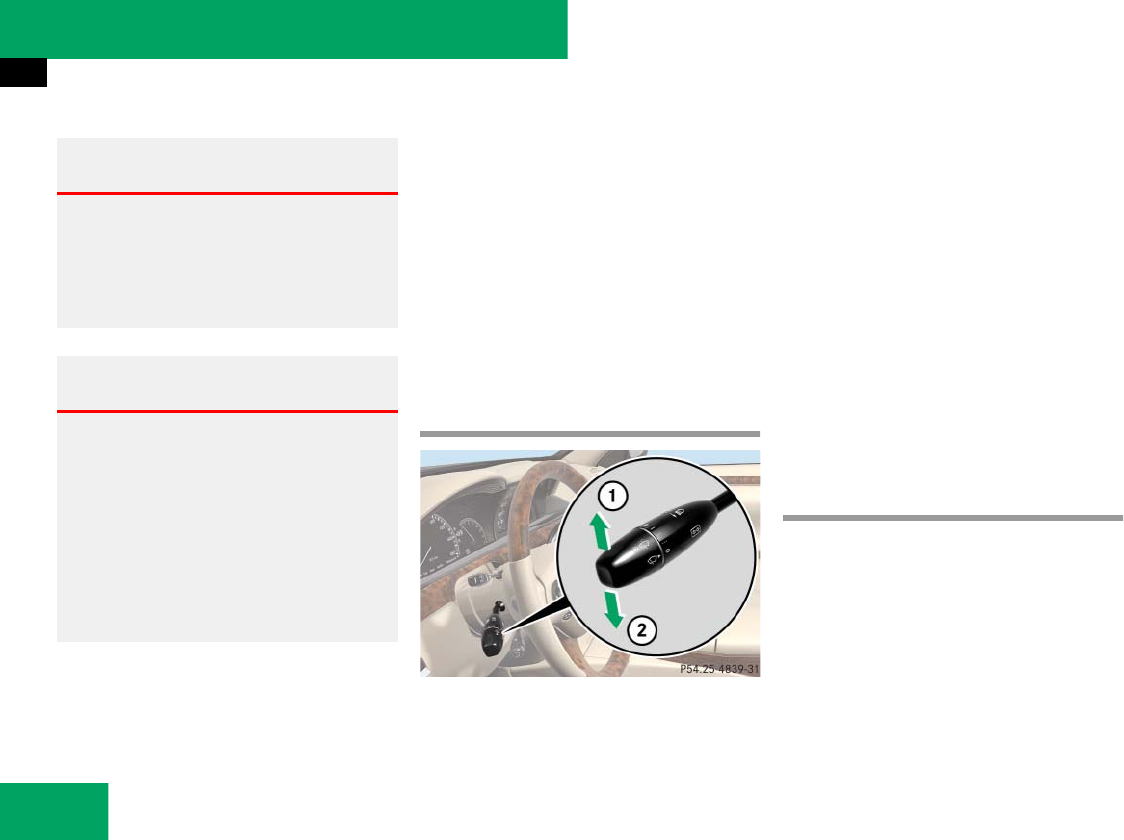
362
Controls in detail
Driving and parking
For more information, see “Driving instruc-
tions” (
୴ page 479).
Turn signals
Combination switch
1 Turn signals, right
2 Turn signals, left
̈ Press the combination switch up 1 or
down 2.
The corresponding turn signal indicator
lamp L or K flashes in the in-
strument cluster (
୴ page 28).
The combination switch resets automati-
cally after major steering wheel move-
ments.
Problems while driving
The engine runs erratically and misfires
ț An ignition cable may be damaged.
ț The engine electronics may not be op-
erating properly.
ț Unburned gasoline may have entered
the catalytic converter and damaged it.
̈ Give very little gas.
Warning! G
On slippery road surfaces, never downshift
in order to obtain braking action. This could
result in drive wheel slip and reduced vehi-
cle control. Your vehicle’s ABS will not pre-
vent this type of loss of control.
Warning! G
It is dangerous to shift the gear selector le-
ver out of P or N if the engine speed is high-
er than idle speed. If your foot is not firmly
on the brake pedal, the vehicle could accel-
erate quickly forward or in reverse. You
could lose control of the vehicle and hit
someone or something. Only shift into gear
when the engine is idling normally and when
your right foot is firmly on the brake pedal.
!
Shift the automatic transmission to P or R
only when the vehicle is stopped in order to avoid
damaging the transmission.
!
Do not run cold engine at high engine
speeds. Running a cold engine at high engine
speeds may shorten the service life of the en-
gine.
!
Simultaneously depressing the accelerator
pedal and applying the brake reduces engine
performance and causes premature brake and
drivetrain wear.
i
To signal minor directional changes, e.g.
passing or changing lanes, move combination
switch to point of resistance only and release.
The corresponding turn signal flashes three
times.
୴୴


















